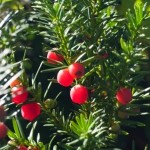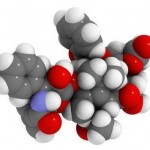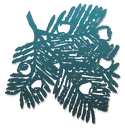
Pacific Yew Tree Branch
The Pacific Yew tree was once considered a “trash” tree of no value. As logging operations harvested the giants of the forests such as the Douglas fir, they would inevitably knock down everything in its path: hemlock saplings, vine maple, and yew trees. After the valuable logs were removed, the left over debris – including the yew – was burned in hot slash fires.
Today this lowly conifer has become the Cinderella story of the nation’s Northwest woods. An unusual chemical called taxol, extracted from the bark of the Pacific yew, has been found to be useful in the treatment of several types of cancer, including breast, ovarian, and certain lung cancers.
The National Cancer Institute has found taxol to be one of the most promising of more than 120,000 compounds tested for anti-cancer properties. Because of the success in its current

Taxol drug molecule
uses, it is hoped that it will become an even more prominent player in the war on cancer.
This shade-tolerant tree did have value even before the discovery of its cancer fighting possibilities in the early 1960’s. Growing very slowly in deep shade, it produces dense, fine-grained wood. Small amounts of this durable wood have been used to make archery bows, canoe paddles, musical instruments, and for other products where it’s super-strong properties are beneficial.
The oldest Pacific yew trees may live to be over 500 years old and its strong, resilient nature is the perfect representation of what it takes to become a cancer survivor. SOE honors this inconspicuous species through subtle details in our masthead logo and other graphic design elements throughout our web site.

